- Share
- Like
- Tweet
- Digg
- Tumblr
- VKontakte
- Love This
- Odnoklassniki
- Meneame
- Blogger
- Amazon
- Yahoo Mail
- Gmail
- AOL
- Newsvine
- HackerNews
- Evernote
- MySpace
- Mail.ru
- Viadeo
- Line
- Comments
- SMS
- Viber
- Telegram
- Subscribe
- Skype
- Facebook Messenger
- Kakao
- LiveJournal
- Yammer
- Edgar
- Fintel
- Instapaper
- Copy Link
Architecture firm KANVA has designed a student housing building that reveals its history through a stunning photoengraved facade. Located on a small vacant lot in Montreal, near McGill University, the building features an impressive facade of concrete panels that reveal still images from Thomas Edison’s 1901 film: Montreal Fire Department on Runners. The Edison Residence, named after the maker of the film, is currently shortlisted for the 2015 World Architecture Festival Awards.

Image © Marc Cramer
The film, along with the still images were carefully selected for their historical and contextual relevance, showcasing the pre-existing 19th century historic stone house that burnt down in a devastating fire in the early 20th century.
The historical context of the site became the primary inspiration for the urban renewal project, which lead to the exploration of an innovative concrete fabrication technique; photoengraved concrete panels that enabled the building to tell a story.
– KANVA
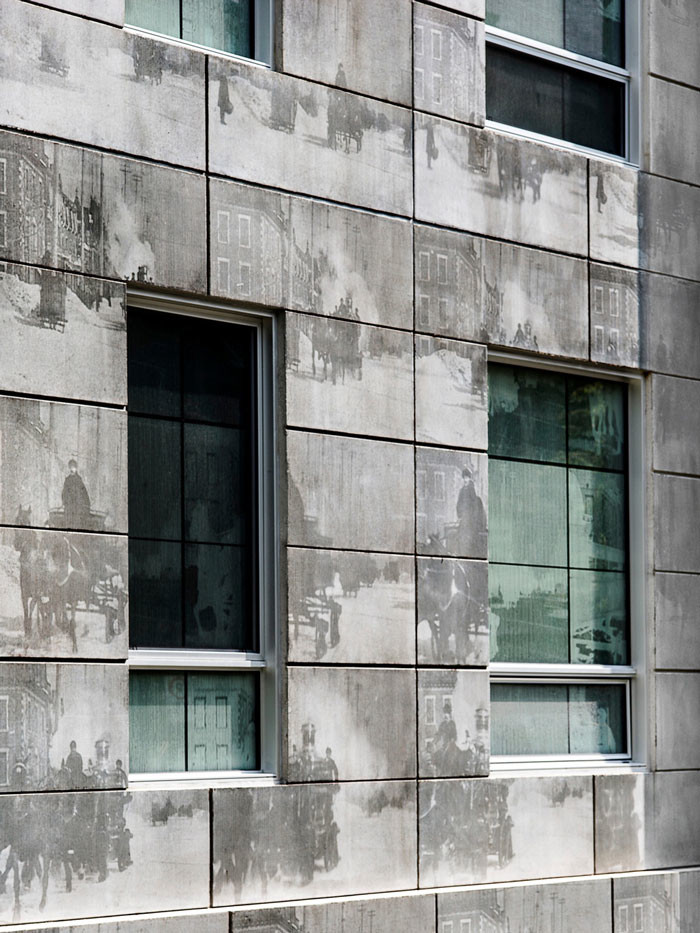
Image © Marc Cramer
Located in a Montreal heritage zone, the project faced materiality constraints, forcing the material palette to be limited to masonry. The design team from KANVA took this as an opportunity to explore and test the limits of concrete.
The process of photoengraving concrete was selected for its sensitive properties; it does not overwhelm the viewer but rather invites the user to re-imagine a story, as they move past or through the building and the film stills progressively move in and out of focus. The refined technique of photoengraving is an intricate tool facilitating a playful and adaptable narrative, on an otherwise brutal and barren material.
– KANVA
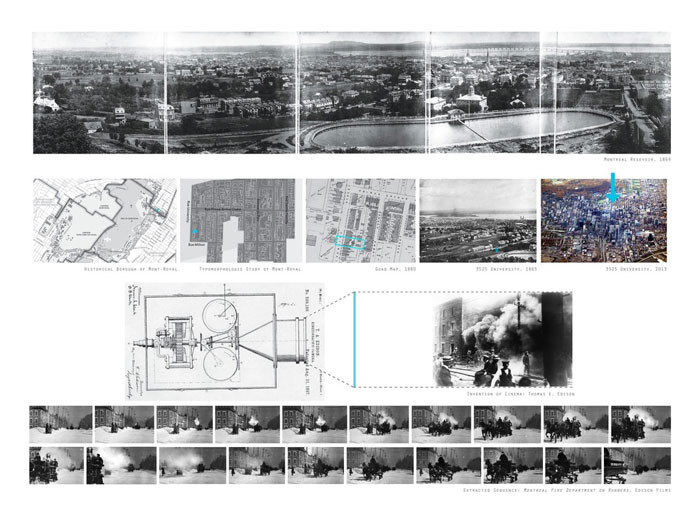
Image © KANVA
Specifically, the process of photoengraving translates an image into a positive/negative representation, which is then converted into a series of vertical striations that form the image. Playing on light and shadow, each film still, and by extension, the sequence in the photoengraving technique is perceived in an ever changing, dynamic manner as the sun’s oblique angles accentuate or the clouds soften the visual perception of the vertical ribs that form the image. The panes of glass on the front facade are also screen-printed with complementary images. The proximity to the facade and the angle it is viewed at transform how the sequence of images is perceived.

Image © KANVA
The building is functionally separated into public and private areas, housing thirty individual room and communal living spaces such as kitchen, lounge and living room.

Image © Marc Cramer
The two defining public and private volumes host internally their respective private and public functions.
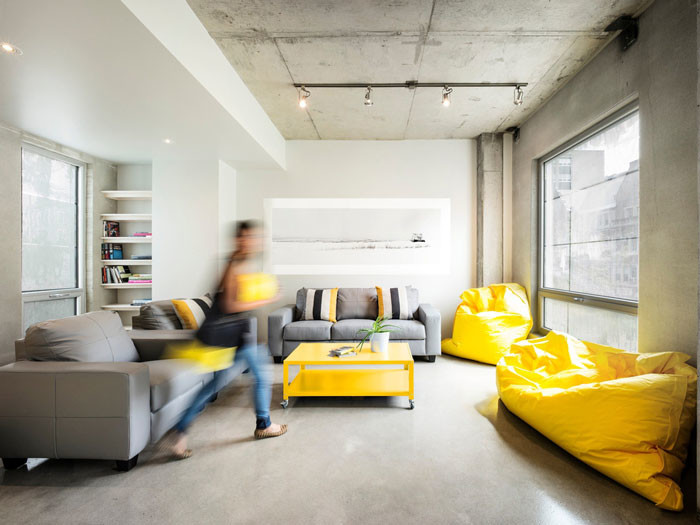
Image © Marc Cramer
Each student room was designed to incorporate floor to ceiling built-in storage. All private rooms have view of the intimate communal garden, which wraps around the entire building.
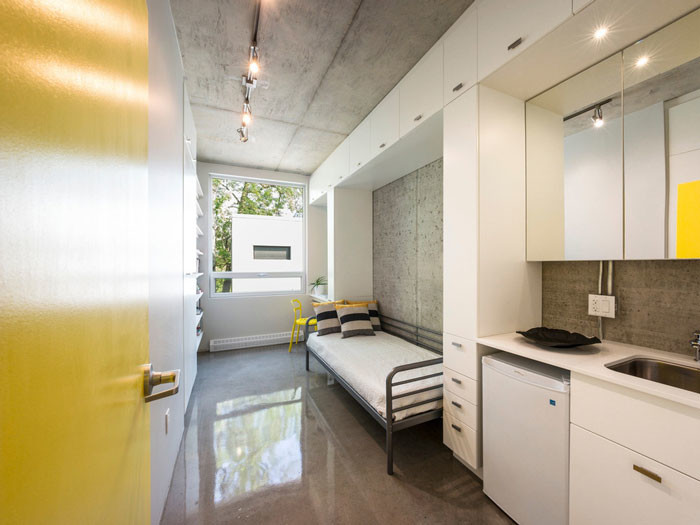
Image © Marc Cramer
The side facade and garden abides by the same conceptual cinematic strategies; the yellow markers are a graphic way of marking individual living modules.
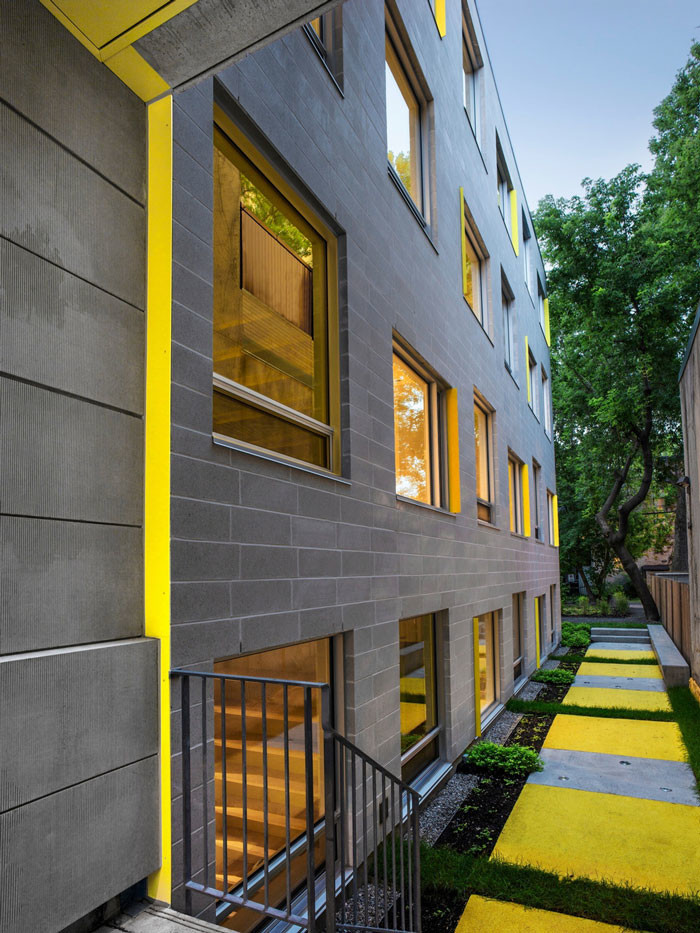
Image © Marc Cramer
The main entrance is through a porte-cochère, a contemporary tribute to Montreal’s traditional method of building a protected passage for horse carriages, which offers an intimate approach to the building.
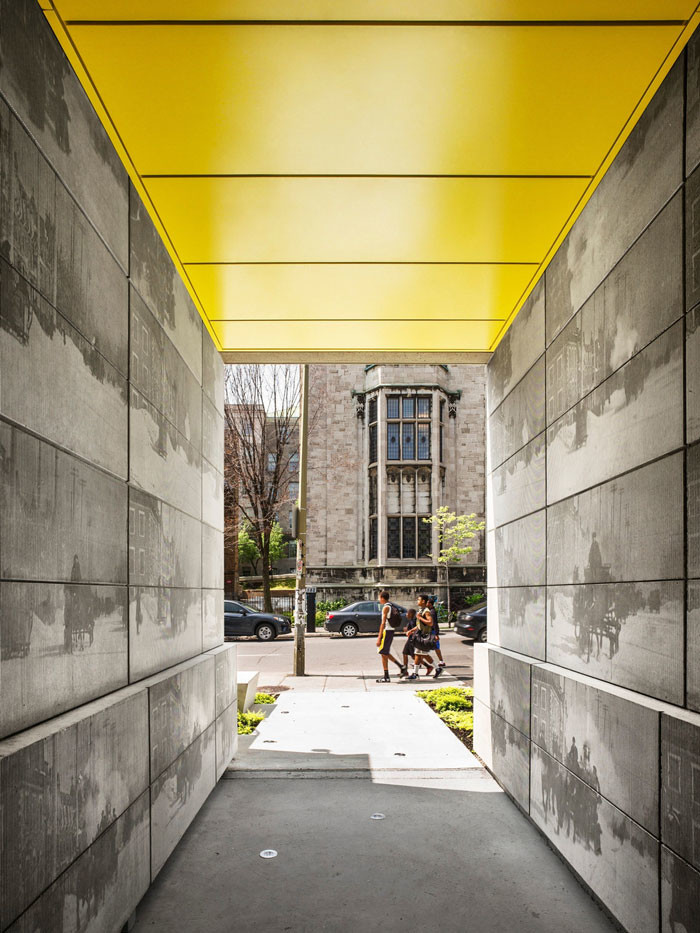
Image © Marc Cramer
Edison Residence creates an animated architecture by using new technology in a socially engaging way. It calls for participation and reflection by the viewer as he or she contemplates the transformation and evolution of the site, and by extension the City. Most importantly, the Edison residence will be an inspiring living space for a student as they broaden their horizons.
– KANVA

Image © Marc Cramer

Image © Marc Cramer

Image © Marc Cramer
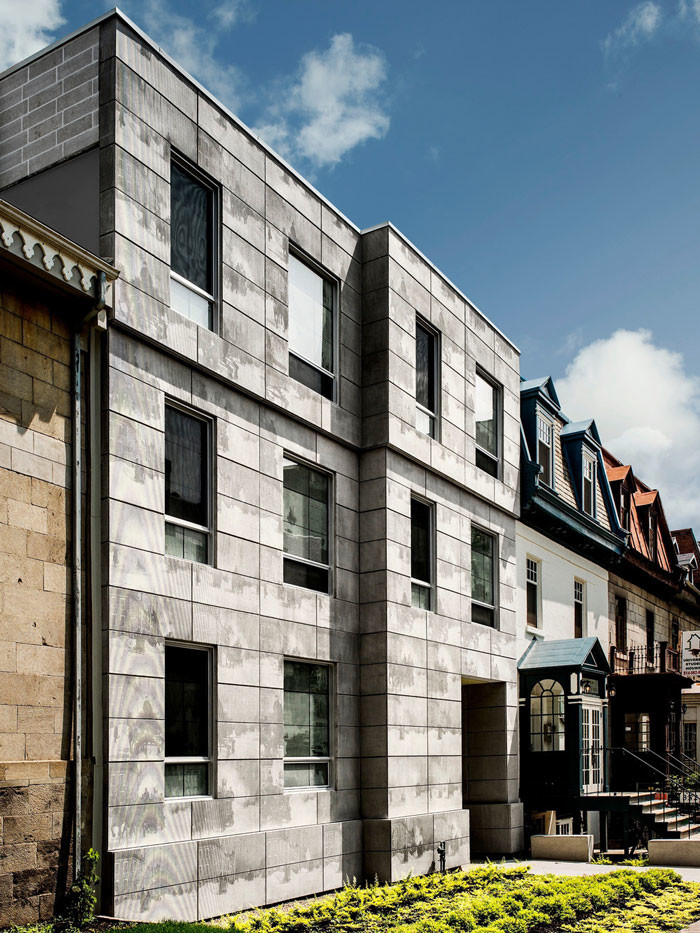
Image © Marc Cramer
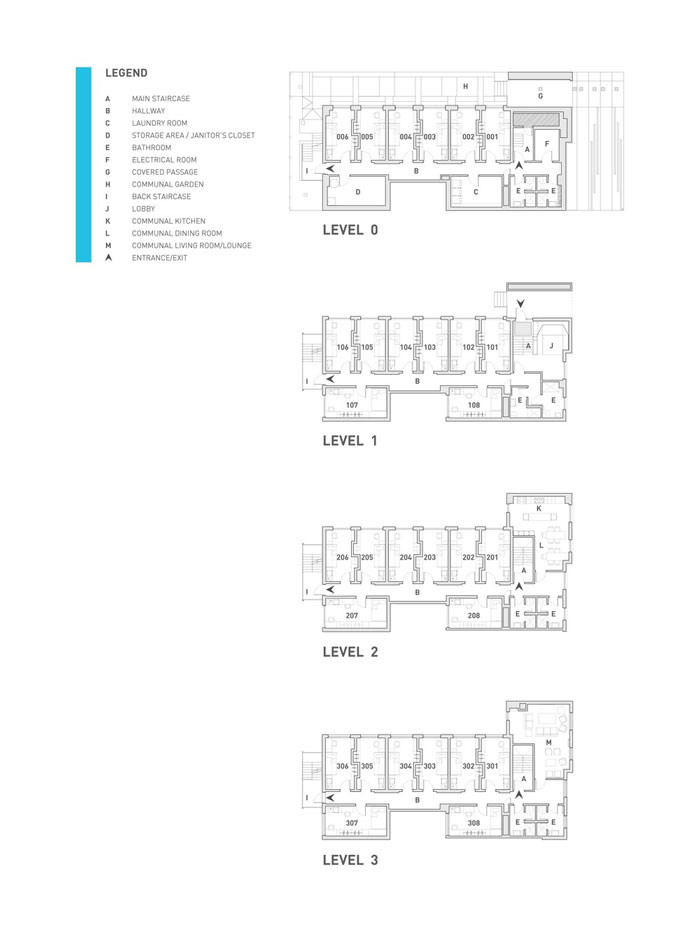
Image © KANVA
Facts:
Project Name: Edison Residence
Location: 3525 rue University, Montréal, QC
Architects: KANVA
Mechanical/Electrical Engineer: bouthillette parizeau
Structural Engineer: NCK inc.
Landscape Architect: Vlan paysages
Contractor: KI
Photoengraved concrete supplier: Reckli, Solubrik, Saramac
Project area: 9,000 sq.ft
Completion date: August 2014
Photographer: Marc Cramer
*All images and information courtesy of v2com.
